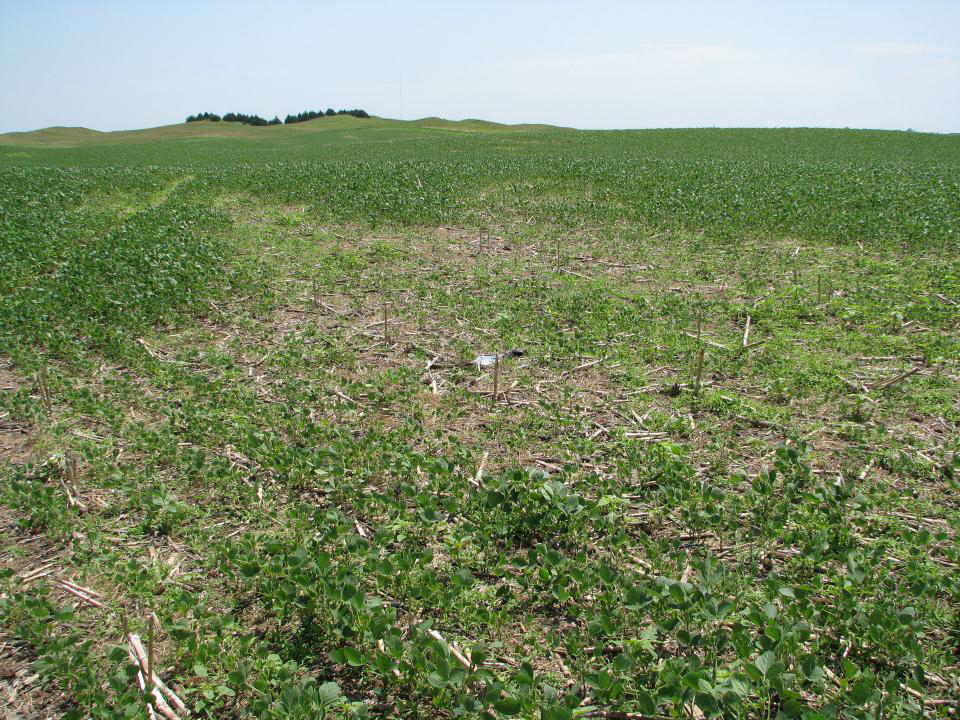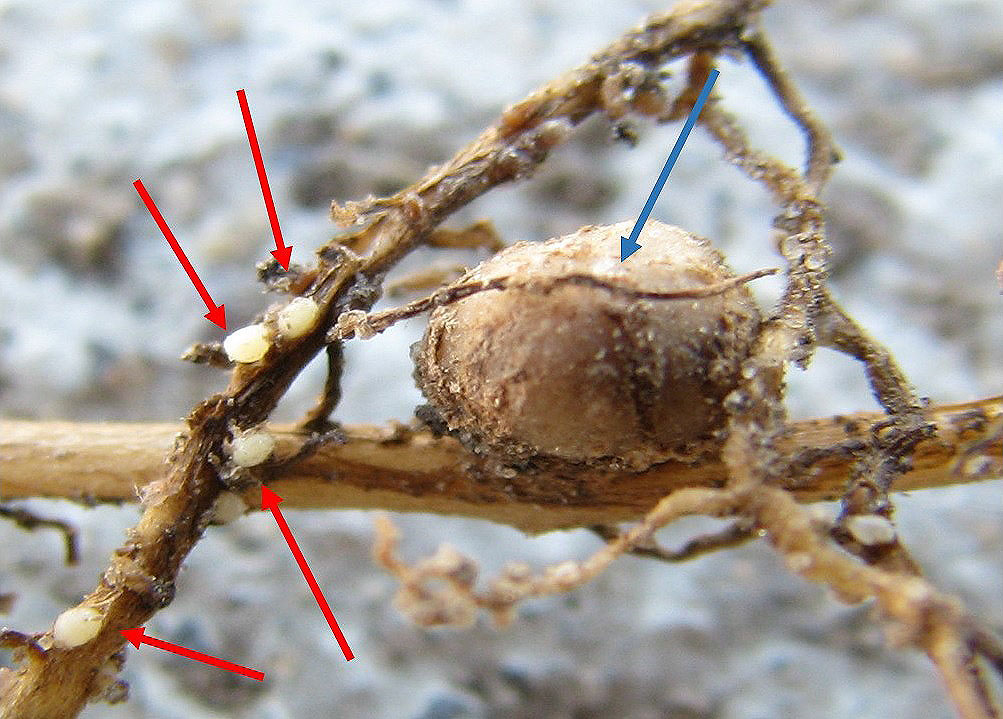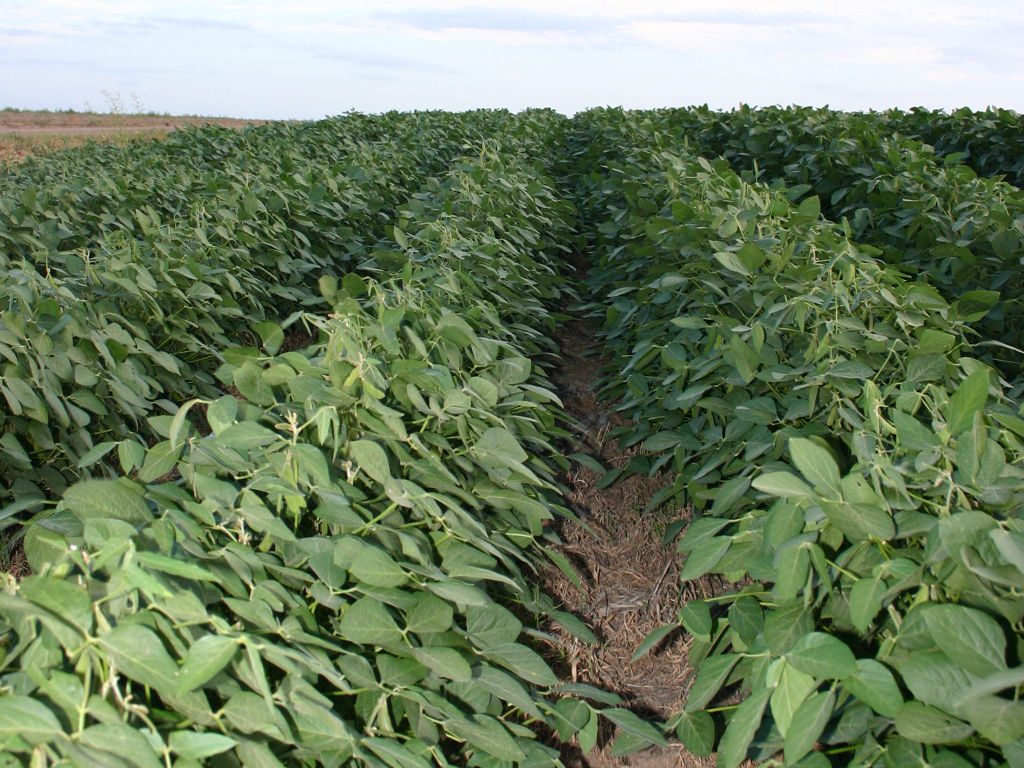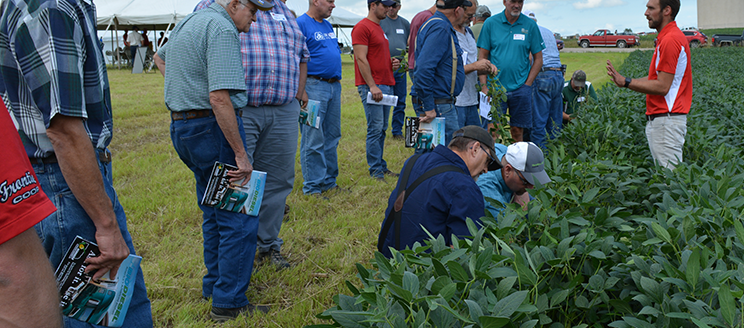October is known as soybean cyst nematode action month because this is the best time to get out and soil sample for SCN. The end of a soybean season is when SCN levels will be at their highest in the soil. Currently, the Nebraska Soybean Board is sponsoring soybean cyst nematode sample analysis for samples from any Nebraska field.
Whether you have verified yield loss from SCN, or not, there is a good chance that the parasite has a presence in some of your fields as seen in figures 1 and 2. SCN is a small roundworm that has slowly spread across the Nebraska production region since being identified in the state in 1986. As of Oct. 1, 2023, SCN has been identified in 59 Nebraska counties as seen in figure 3.

This pest is the number one yield-limiting biotic agent of soybeans in North America, estimated to cost U.S. producers $1.5 billion a year. The reason this pest is so insidious is because SCN can cause up to 30% yield loss with no significant aboveground symptoms.
The pest is typically introduced into new fields by soil movement on field equipment and is often distributed in pockets throughout the field. For this reason, keep an eye on your yield monitor during harvest to identify unexplained low-yielding areas. The most accurate way to verify SCN presence in a field is soil sampling. To take advantage of this program, request a shipment of free soil sample bags online or contact your local extension office and submit soil samples using the following procedure.

Sampling procedure
Collect SCN samples with a 1-inch diameter soil sampling probe or spade. Collect at least 15 to 20 soil cores in a zigzag pattern from across the field. Samples should be collected from the root zone at a depth of about 6 to 8 inches across about 10 to 20 acres. Break up the collected soil cores and mix them well in a bucket. Place at least 2 cups of the composite soil sample in a bag and submit for SCN testing. A sealable plastic bag works great to prevent samples from drying, or use marked SCN sample bags available at your local Nebraska Extension office or the University of Nebraska-Lincoln Plant & Pest Diagnostic Clinic.
While sampling, keep in mind that anything that can move soil can move soybean cyst nematode. For this reason, there are several areas with increased SCN introduction risk. Below is a list of high-risk areas that you should consider sampling.

Areas of the field where soybean crops yielded less than expected:
- Areas of the field where soybean plants appeared stunted, yellow, or defoliated earlier than the rest of the field
- Low spots in fields
- Previously flooded areas of fields
- Field entryways
- Along field borders
- Areas where sudden death syndrome (SDS) or brown stem rot (BSR) developed
Submit samples to:
UNL Plant & Pest Diagnostic Clinic
448 Plant Sciences Hall
P.O. Box 830722
Lincoln, NE 68583-0722 Learn more about the program and management techniques at: https://cropwatch.unl.edu/2023/its-season-controlling-soybean-cyst-nematode.




